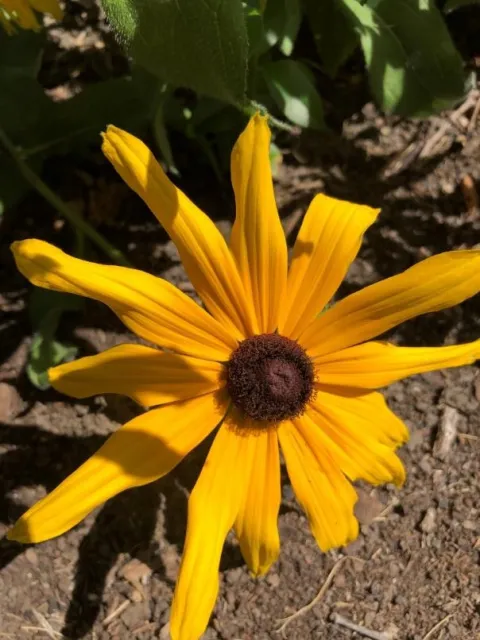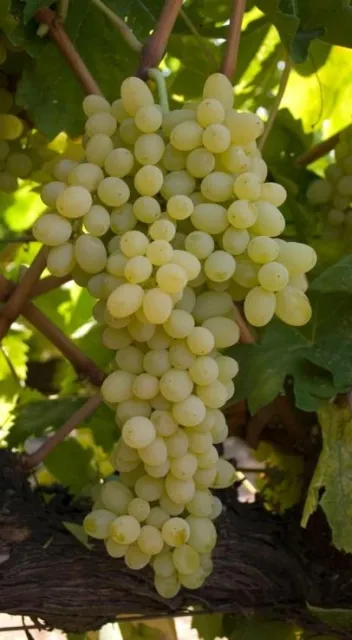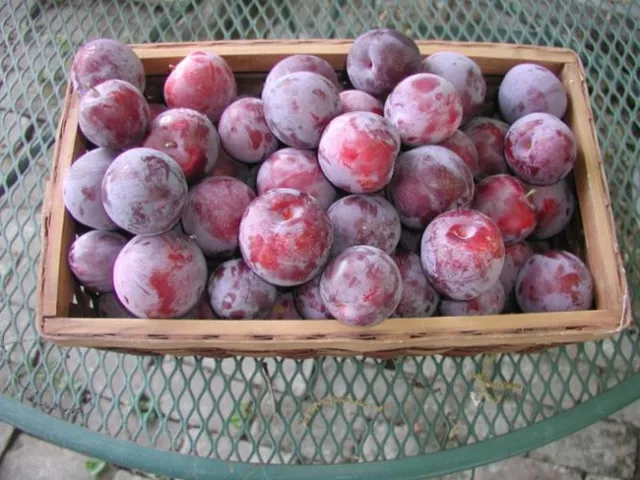PERENNIAL: Rudbeckia fulgida var. sullivantii 'Goldsturm' This black-eyed Susan cultivar has ample pest and disease resistance, and an extra-long blooming time. Hence it is easy to see why this cultivar won the Perennial Plant Association's Plant of the Year Award in 1999. It has long stems so it works well as a cut flower. It is one of many black-eyed Susan cultivars that are all great perennials to grow. Rudbeckia hirta and Rudbeckia subtomentosa have additional cultivars in a variety of colors see: https://gardenerspath.com/plants/flowers/best-black-eyed-susan-varieties/ . For another review of cultivars see: https://www.homestratosphee.com/types-of-black-eyed-susans/ .
There's no denying that black-eyed Susan cultivars are beautiful and in addition are drought-resistant, hardy, long-blooming, good at self-seeding, deer resistant, and butterfly-attracting. They do best in full sun but can handle light shade. They are good in your border or containers. Most are in the 2-3 foot tall category and perhaps 1-2 feet wide, but there are some that can grow to a height of 6 ft. Color and petal size can vary though most have yellow petals or bicolor petals, but there are also red and burgundy ones and the centers can be brown, green or black. The number of varieties that can be grown is awesome.

VINE: Thompson seedless grape (Vitus vinifera). This grape is one of the first seedless grapes and is still number one in grape vine sales. It originated in Turkey and was known as Sultanina in Asia Minor. The cultivar was among a group of cuttings bought from a nursery in New York in 1878 and planted by William Thompson of Marysville, California. Thompson propagated the cuttings and gave a number of them to his neighbor, John Onstott of Yuba City. Onstott realized the commercial potential of the cultivar and achieved great success with it. In 1892 he shipped over two million cuttings and rootings of Thompson Seedless to growers throughout the state and most went to the San Joaquin Valley where it has been grown for fresh and raisin markets for years.
It can also be grown as an ornamental on an arbor or wall for shade. The vines should be cane pruned to four or five canes with 15 buds on each cane to produce a good crop. The grapes are light green in color and are sweet with a mild flavor and can be eaten fresh or dried as raisins. It ripens in mid-August. Most commercially sold raisins are from this variety. When growing, be sure to thin each bunch by clipping off the pendulous tip which gives the remaining grapes more room and air space to lessen fungal infections and promote larger grapes. It is an excellent choice for the Central Valley as it thrives on heat. Deep moderately fertile soil and full sun work best for this plant. It is self-pollinating.

TREE: Santa Rosa plum (Prunus salicina). For the home orchard, this is a good tree to have and the plums are delicious. A dwarf tree is best as it requires less pruning to keep it short. At my old homestead I had a standard tree that was 25 feet tall and required an orchard ladder to prune it and to pick the fruit. The tree is a Japanese plum variety that does best with a pollinator variety although it will produce fruit without a pollinator. It is an excellent pollinator of other plums. Another advantage of Santa Rosas is that they will mature in three to five years, whereas average plum trees take four to six years to bear fruit. This plum was developed by Luther Burbank who was based in Santa Rosa, hence the name. He introduced this variety in 1906, so it has been a very popular fruit tree for over 100 years. It produces plums mostly on new wood so winter pruning to renew growth is important. Bare root season starts in December and is a good time to purchase and plant a Santa Rosa plum and a Thompson seedless grape.


